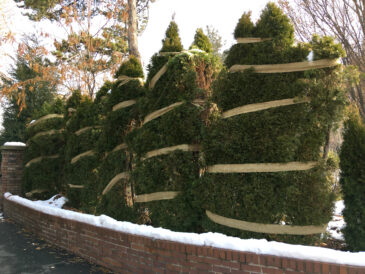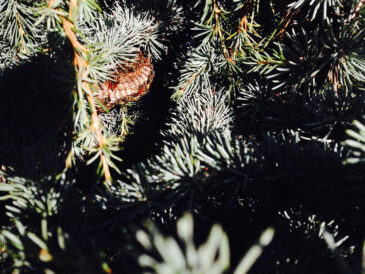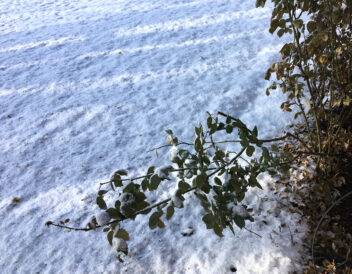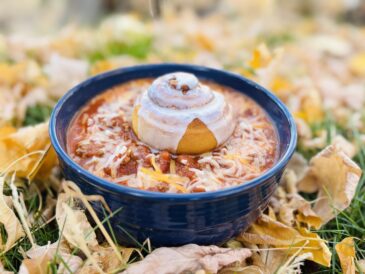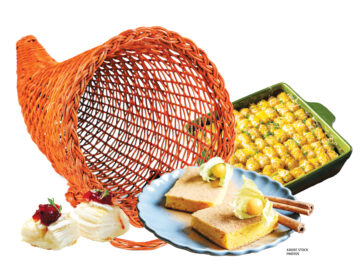Garden Help Desk: Tips for preventing snow damage to landscape shrubs
- Wrapping evergreen shrubs like these arborvitaes with burlap or tree wrap can prevent snow breakage or other damage.
- This paper wasp nest is on a low branch right by a sidewalk, which creates a hazard for people walking past. In a situation like this, safely removing the nest may be needed.
- Hornets frequently build their football-shaped nests high in trees. These nests are abandoned in the fall and will break down in the winter weather.
- A long rose cane like this one can easily bend or break when snow collects on the persistent leaves.

Photo by Meredith Seaver
Wrapping evergreen shrubs like these arborvitaes with burlap or tree wrap can prevent snow breakage or other damage.
What is the best way to prevent my taller boxwood shrubs from having their branches bent or broken by snow this winter?
Any evergreen with soft or long, thin branches – think arborvitae, boxwood, laurel, yew or juniper – can be damaged when snow accumulates on the branches, but there are a few things you can do to prevent this.
The most common way to prevent snow damage is to wrap these shrubs with long strips of burlap or some other strong, soft product that will last through the winter. Start at the bottom of the shrub and just wrap your way up to the top. Make sure the loops around the shrubs are close enough to keep the branches securely contained.
You can also just gently brush or knock the snow off your shrubs during and after each snowstorm if you feel confident that you won’t forget to do it each time.
When possible, avoid throwing or blowing snow into shrub beds along sidewalks or driveways when you’re shoveling snow.
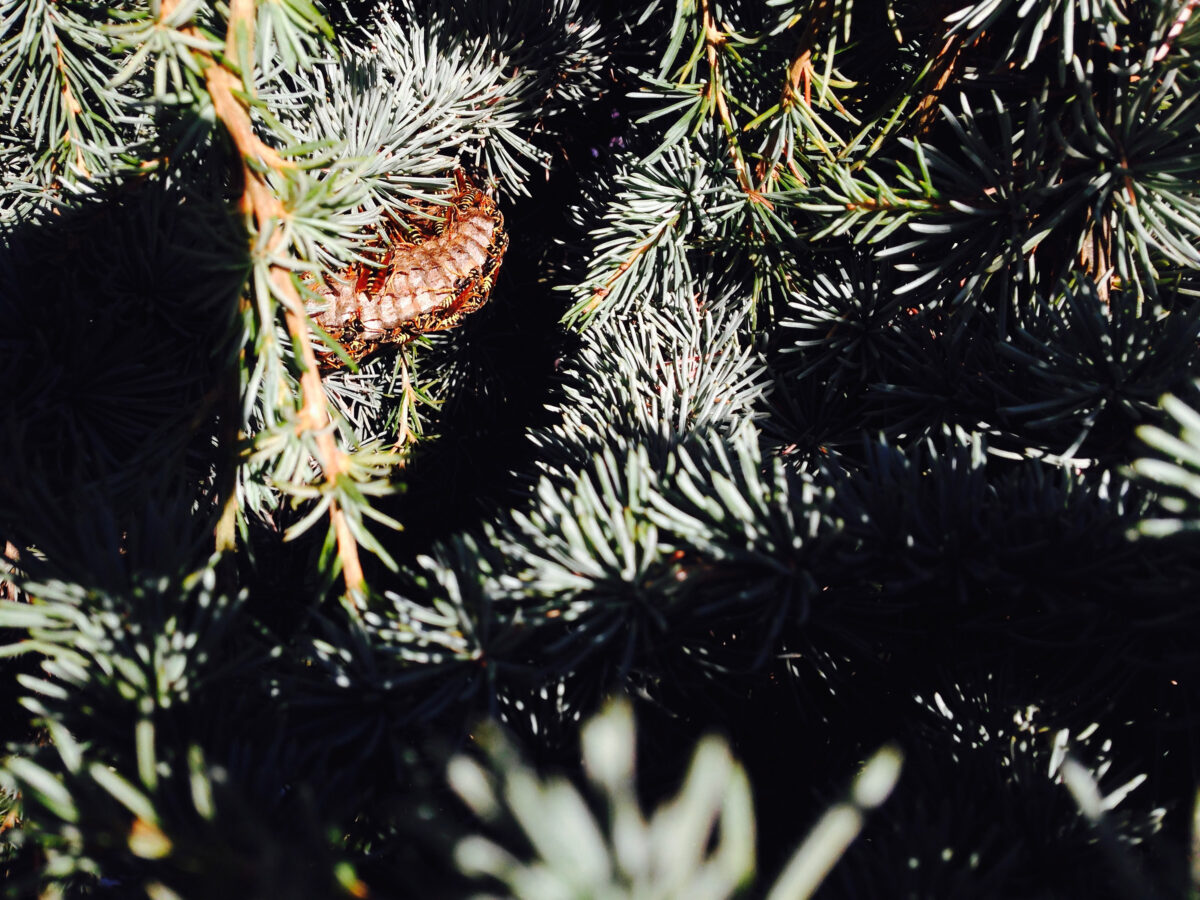
Photo by Meredith Seaver
This paper wasp nest is on a low branch right by a sidewalk, which creates a hazard for people walking past. In a situation like this, safely removing the nest may be needed.
If you’ll be planting new evergreen shrubs, you can save yourself some future work if you don’t plant them where ice and snow from your roof will land. Also, allow room in new shrub beds for tossing shoveled snow without damaging your plants.
Snow damage can also be a problem for rose bushes if their canes have grown tall during the summer. Roses can retain some of their leaves into the winter, and snow can collect on the leaves, bending and breaking the canes. You can prevent this by cutting back the tallest canes to about four or five feet tall. You don’t need to cut them back as far as you would during your normal springtime pruning. Also, check climbing roses for any long canes that aren’t secured to their trellis and cut them back or secure them.
I can see a wasp nest in my tree. There were a few wasps in our yard during the summer and now that the leaves have all dropped, I can see a round nest. What can I do to keep them from coming back next year?
This looks like a hornet nest. Nests like these aren’t reused from year to year, so you probably won’t see wasps in the same place again next year. At this time of year, the nest is empty and the queen is overwintering somewhere. She is the only surviving wasp from the nest and will start a new colony next year in a new location. The abandoned nest will break down in the elements, but you could also simply remove the nest, if you can reach it safely. Don’t try to remove active nests unless they are located near human activities that makes it necessary.
Both hornets and paper wasps will make nests in trees and on structures, but paper wasp nests, like the ones built by European paper wasps, can be shaped more like an open umbrella – quite different than football-shaped hornet nests. Paper wasp nests are also abandoned in the fall, and the queen will overwinter and start a new nest and colony in the spring.
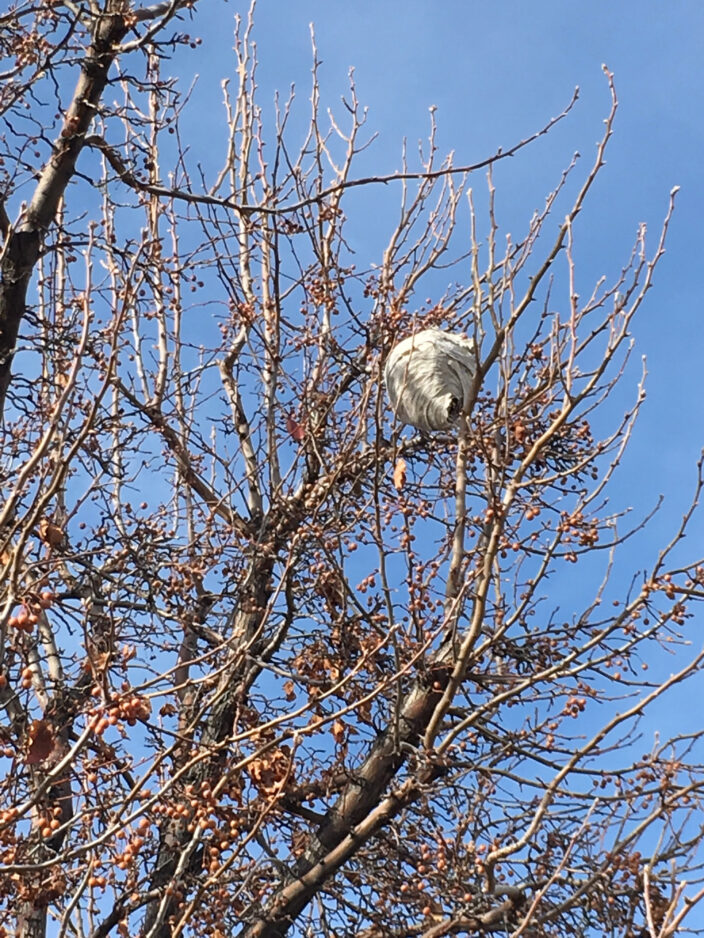
Photo by Meredith Seaver
Hornets frequently build their football-shaped nests high in trees. These nests are abandoned in the fall and will break down in the winter weather.
It may be tempting to spray an active wasp nest with an insecticide, but this can be risky. Wasps can become agitated and aggressive while you spray. Also, some wasp and hornet sprays are not safe for trees and can cause damage. Read any product labels carefully to make sure you won’t trade one problem for another.
Hornets and other wasps are beneficial insects, eating other insects and spiders and helping to keep pest populations in balance. It’s best to manage them with non-chemical methods. For example, they may feed on over-ripe fruit and picnic foods, so keep old fruits cleaned up and keep picnic foods covered if you notice any hornets or wasps next year.
Meredith Seaver is a USU Extension horticulture assistant.
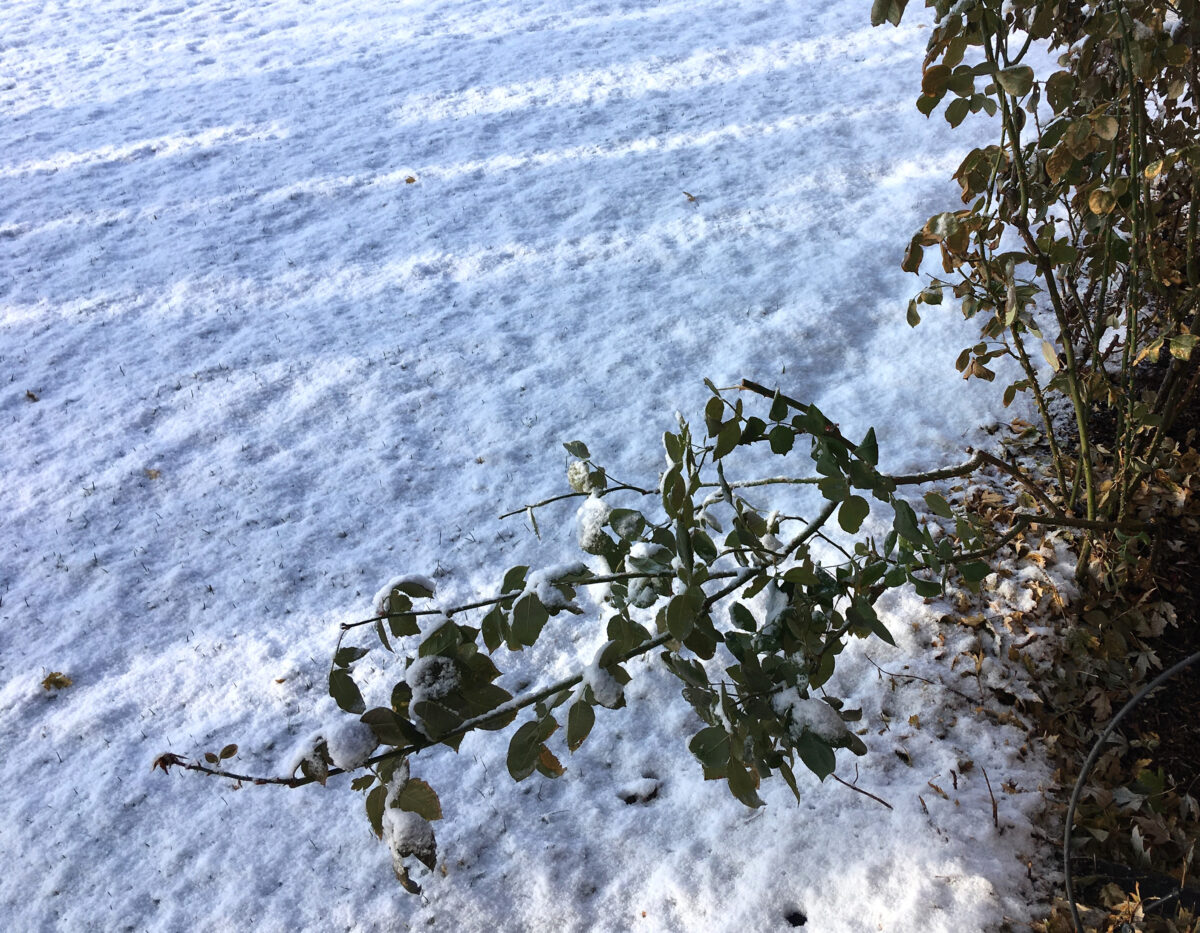
A long rose cane like this one can easily bend or break when snow collects on the persistent leaves.

